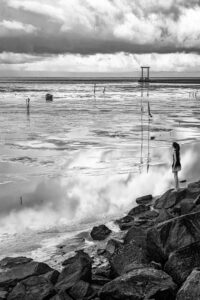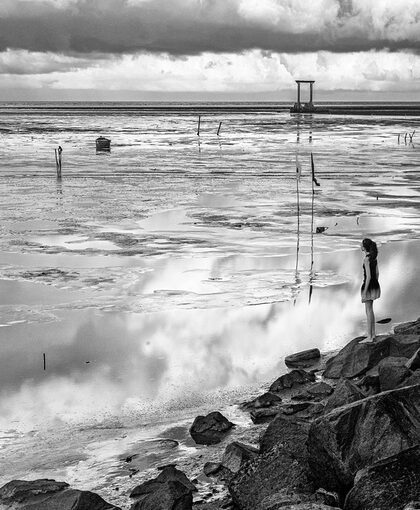Some thoughts on the photographic process.
For me, the Photographic Process encompasses several stages, some think of it as simply taking a photograph with a device such as a camera or a phone, but I’d like to just mention the stages that I consider part and parcel of the Photographic Process, all of this just to speak specifically about one part that has to do with some of my black and white images.
 The photographic process begins with the Photographer’s Eye, seeing that which is intended to be captured, since we all see things differently, this first part starts the differentiation of one image from the next and “my image” from “your image”. Secondly, our camera adjustments, for many this is done using the automatic settings, but for others it may entail making several adjustments to modes and setting values for shutter speed, aperture and ISO; these settings are usually determined by the lighting conditions and the desired “look” of the resulting image. Next comes the composition, determining what to include in the frame, what to exclude, and a variety of other compositional techniques. Then we click the shutter button.
The photographic process begins with the Photographer’s Eye, seeing that which is intended to be captured, since we all see things differently, this first part starts the differentiation of one image from the next and “my image” from “your image”. Secondly, our camera adjustments, for many this is done using the automatic settings, but for others it may entail making several adjustments to modes and setting values for shutter speed, aperture and ISO; these settings are usually determined by the lighting conditions and the desired “look” of the resulting image. Next comes the composition, determining what to include in the frame, what to exclude, and a variety of other compositional techniques. Then we click the shutter button.
In our current digital age, this is usually the end of the process, it gets shared on social media, etc., some may pass the image through a simple software for preset filters etc before sharing. For photographers, this has only been half the work, the next stage is to process the image, depending upon the ultimate use of the image this can be done in a myriad of ways; for me, I seldom do weddings or portraits, so generally the image is intended as ”art”, yes, it sounds pretentious, but that’s what I usually intend, so I would often process the image through Adobe Lightroom, and for many of my black and white images, I also use DXO Nik Silver Efex for the black and white processing. Once the image is processed to my satisfaction, it is then shared to my site or to social media. For me, however, the process ends at another stage, when I actually have the image printed.
The size of the printed image is usually limited by a few factors, including the size (usually in megapixels) of the original capture, the content of the frame (composition) and the type of processing done to the image. Some of my black and white processing can result in things that would not look well if printed large, such as today’s image. I used a high contrast process and worked to heighten the structure and clarity of the image, in so doing there is a resultant “haloing” in existing high contrast areas of the image, when enlarged this can lend the impression that the image was “edited” that portions were spliced in, when in fact they were not. So, in short, I most likely would not print this image large, possibly 16” x 24”’ as the largest print, this would retain the integrity of the image for me.
This is not a new photograph, it lay unprocessed in my files since 2014, I went scanning through the archives again this morning and spotted it, wondering why I never processed it (as usual). It is not the latest addition to the Oniabo Collection.


